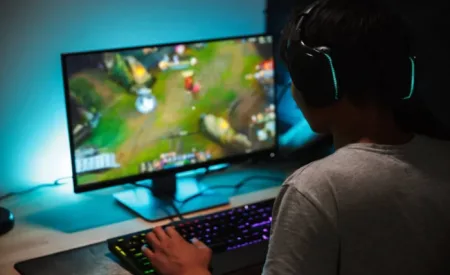Knowing different tactics within the world of poker always helps to have greater control of the game and consequently to have many more options to win a game. Throughout this article we are going to talk to you about the RFI strategy in poker. Our goal is that you can master it and get the most out of it.
What is RFI?
It is important to make clear that on many occasions it is also known under the term Open raise. As the online poker experts at Habwin.com tell us, a “Raise First In” (RFI) situation occurs when the action folds before reaching the flop, and you decide to raise, thus becoming the first player to contribute voluntarily to the boat.
For example, if the other players fold while you are in the kidnapping position and you decide to raise, you will be the player who initiated the raise. This situation is considered an RFI only if no one has called the bet before that.
However, it is important to differentiate RFI from preflop raising (PFR), which encompasses any raise you make before seeing the community cards, including 2bet, 3bet, 4bet and later bets.
When the stock folds and the decision falls to you, it is advisable to always choose to raise or fold, no matter what position you are in at the table. If you tend to call bets frequently, you will miss opportunities to win the blinds. The only exception where it might be advisable to call is when you are in the small blind position and all the players before you have also called the minimum bet.
RFI strategy and frequency
Depending on the position we occupy at the table will depend on when we have to raise or not. For example, if we are in an early position it may be a good option to opt for a tight strategy. On the other hand, if we are in a late position we can opt for a wider range.
Position on the table Frequency OR
UTG 7%
UTG+1 8%
UTG+1 9.5%
MP 11%
LJ 13%
HJ 18%
CO 27%
BTN 48%
SB 36%
Correctly sizing an RFI
In poker, it is essential to pay meticulous attention to bet sizes and consider numerous contextual aspects, such as:
- The number of chips available in a tournament.
- The value of the blinds and the presence of previous bets in tournaments.
- The influence of the Independent Chip Model (ICM) in tournaments.
- The style of play in cash games.
- The choice of playing at a physical table or online.
However, generally speaking, we can identify certain “standard” bet sizes. In the early stages of a poker tournament, it is common to open the action with a bet of three times the big blind, as players have larger stacks and the blinds are relatively low. As the tournament progresses and pre-bets come into play, it is more typical to make an initial raise of 2.5 or 2.2 times the big blind. When you are in small blind or early position (Under the Gun, UTG) and anticipate playing out of position (OOP), the opening can vary between three and four times the big blind.
At cash tables, since the value of the blinds does not change, you will generally see openings ranging from two to two and a half times the big blind, taking into account all the subtleties involved.
It is also important to highlight the distinction between live and online play. In live play, it is common to see opening bids ranging from three to five times the size of the big blinds frequently.
How much do you have to raise first?
When you find yourself in this situation and wondering how much you should raise, poker experts suggest two different approaches:
Maintain a constant raise from all positions, approximately 2.25 times the big blind amount, with the exception of the small blind.
Use a smaller initial magnification and gradually increase it as you get closer to the button. Some of the top poker players often start with a 2bb raise from any position and raise to 2.5bb when they are close to the button.
Sometimes you need to adapt and move away from these standard recommendations. If your opponents tend to fold frequently in the blinds, even on small raises, then lower raise sizes will be more profitable, regardless of your hand strength.
RFI in tournaments
Implementing RFI in tournaments is often more complicated because players have to take into account many other variables. The most common thing among players is to raise more as they progress in the game to have more options to win the games and, consequently, the tournament.
But you always have to adjust the strategy taking into account the number of chips you have and those your rivals have. In this case, experience always helps to make the best decisions.
Where to put the RFI strategy into practice in poker?
If you want to start learning how to put the RFI strategy into practice, without a doubt the best option will be to choose to do it through online games. If you don’t know where to play, in the article published by CompramosBien they show us the best online poker rooms to play with maximum security. The important thing is to always choose a safe room to play with and put the strategy into practice.
Like everything in this life, it will most likely take a little while to master at first, but with the passage of time and experience you will begin to master it. And once you master it, it will be much easier for you to make the right decisions.
When you master the strategy in online poker games, you can then put it into practice in face-to-face games. This way everything will be easier for you.



